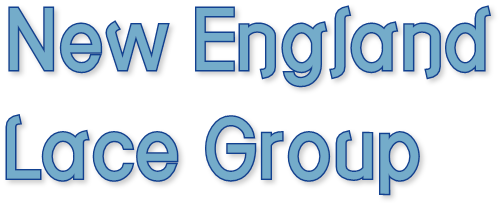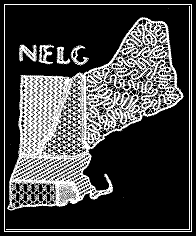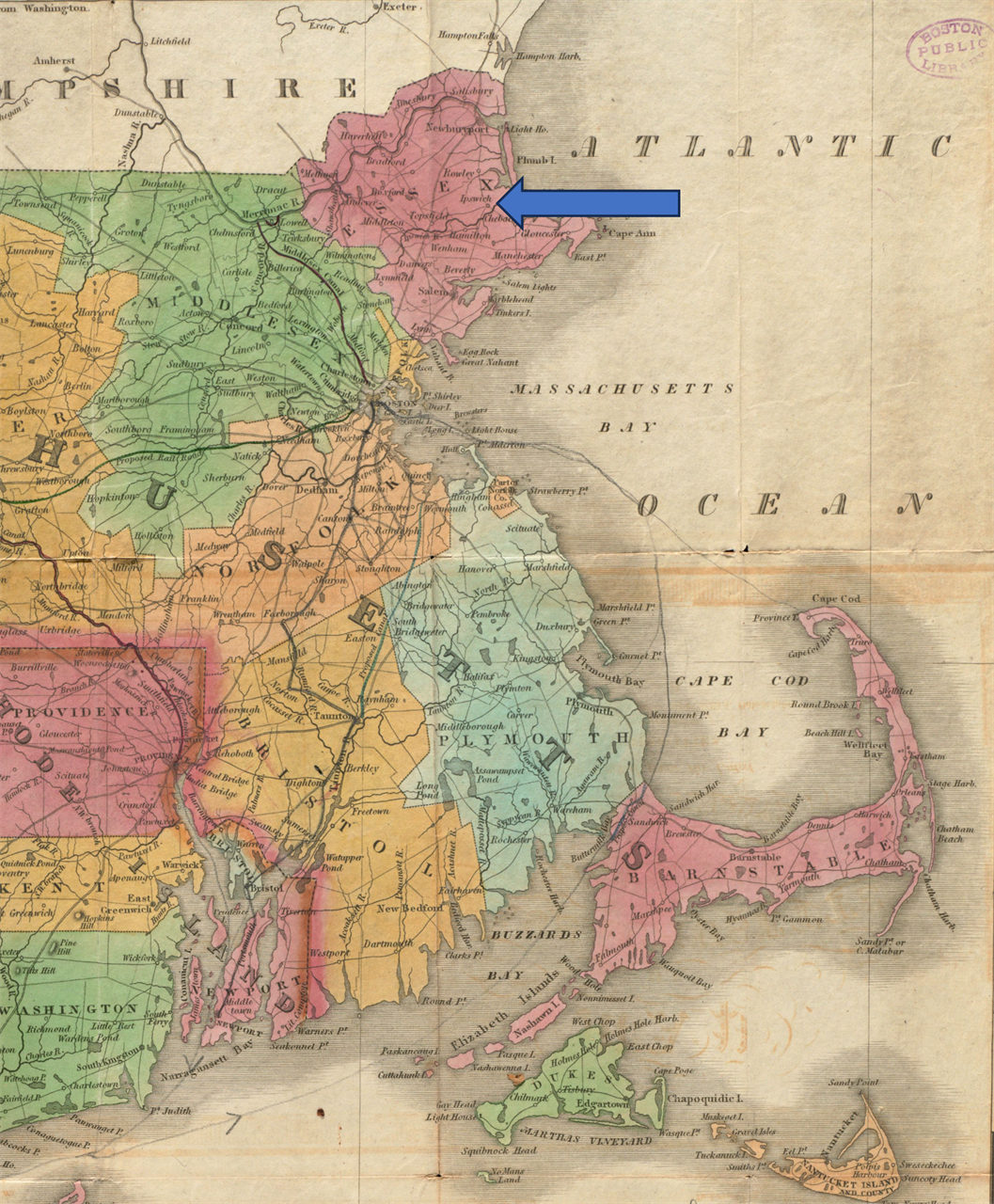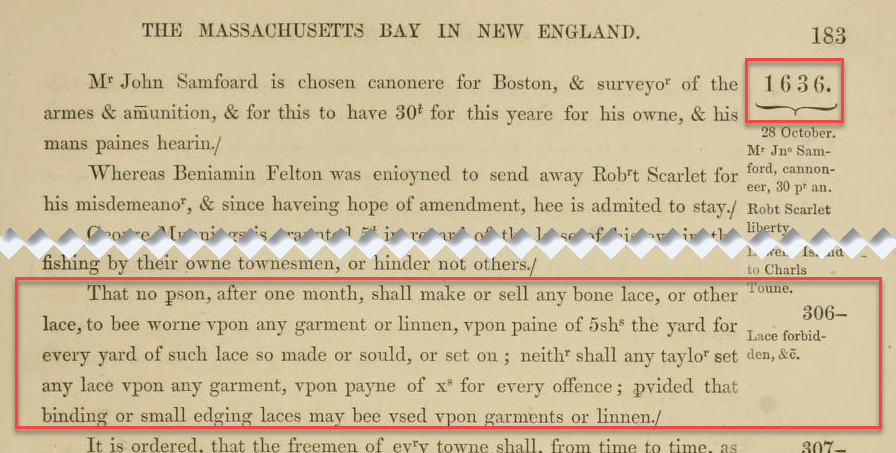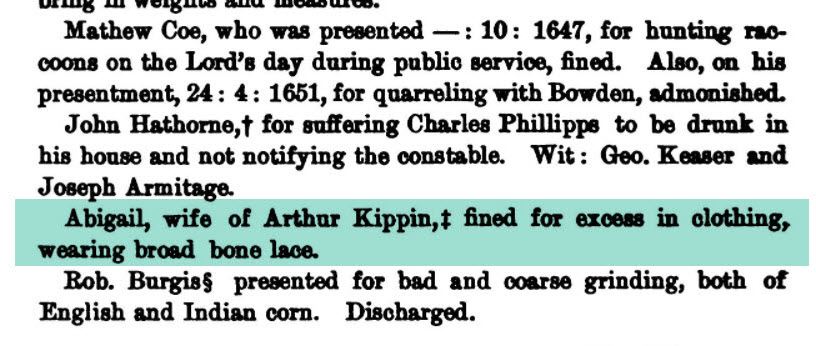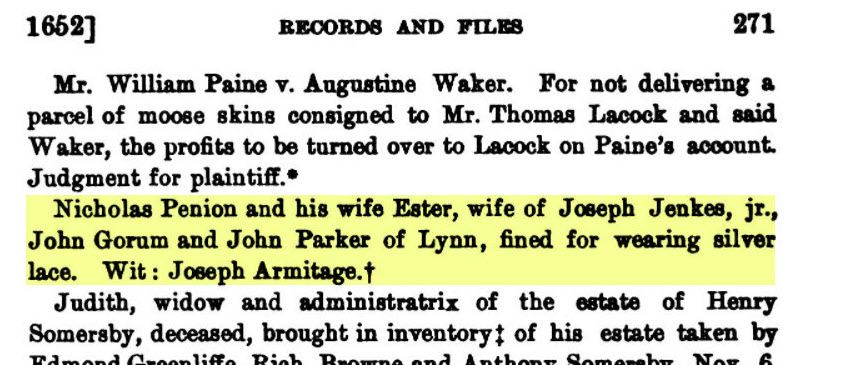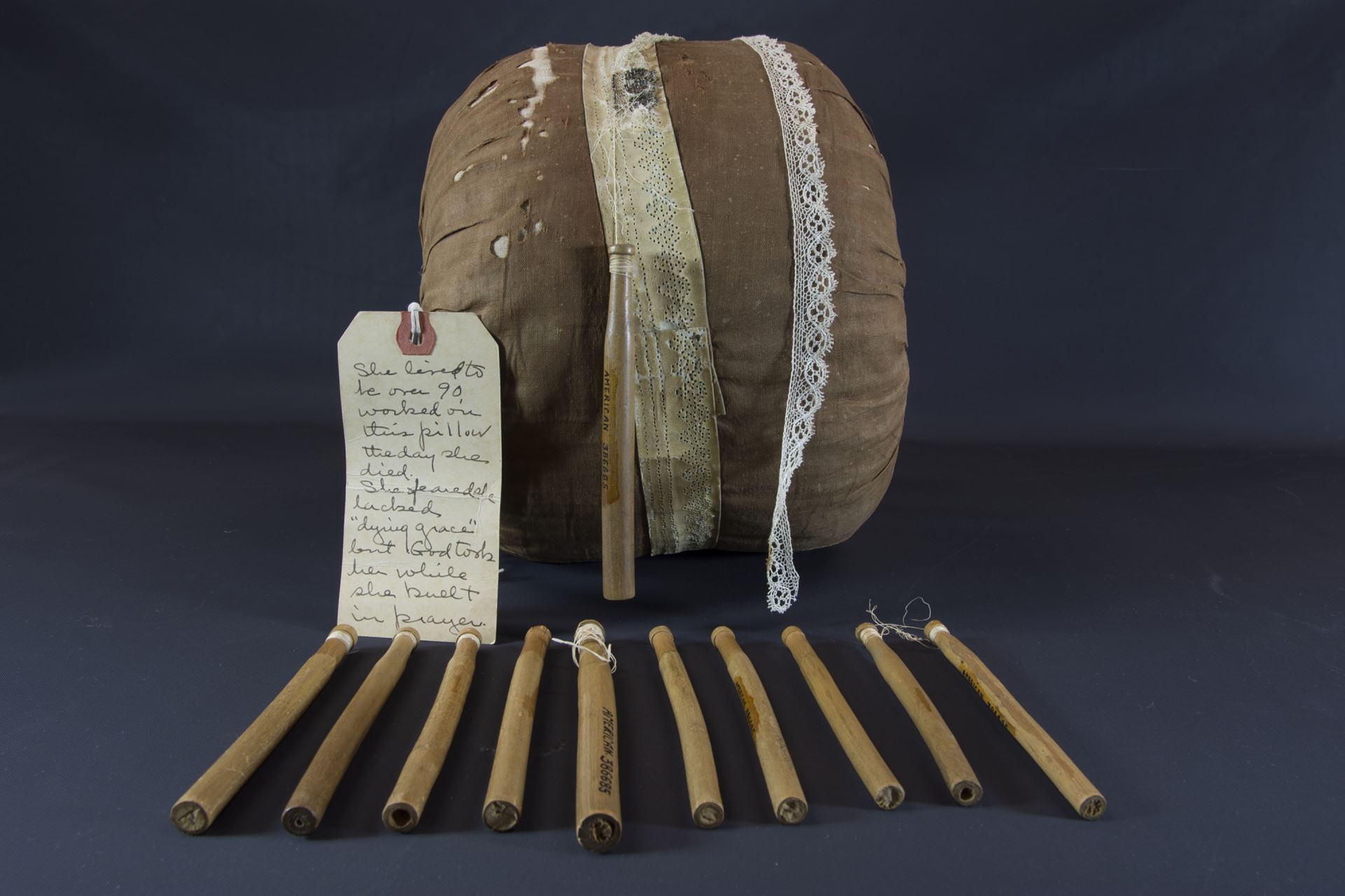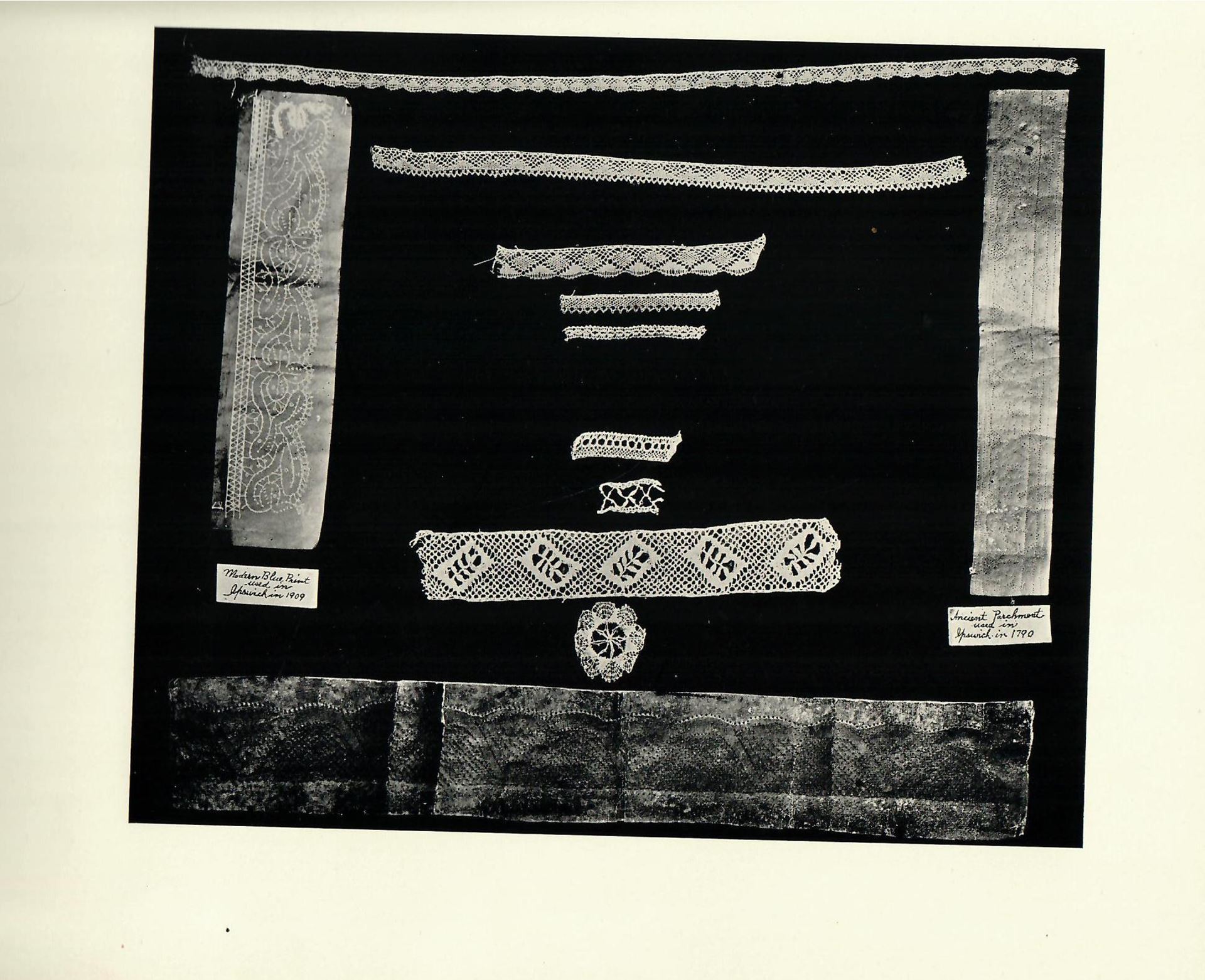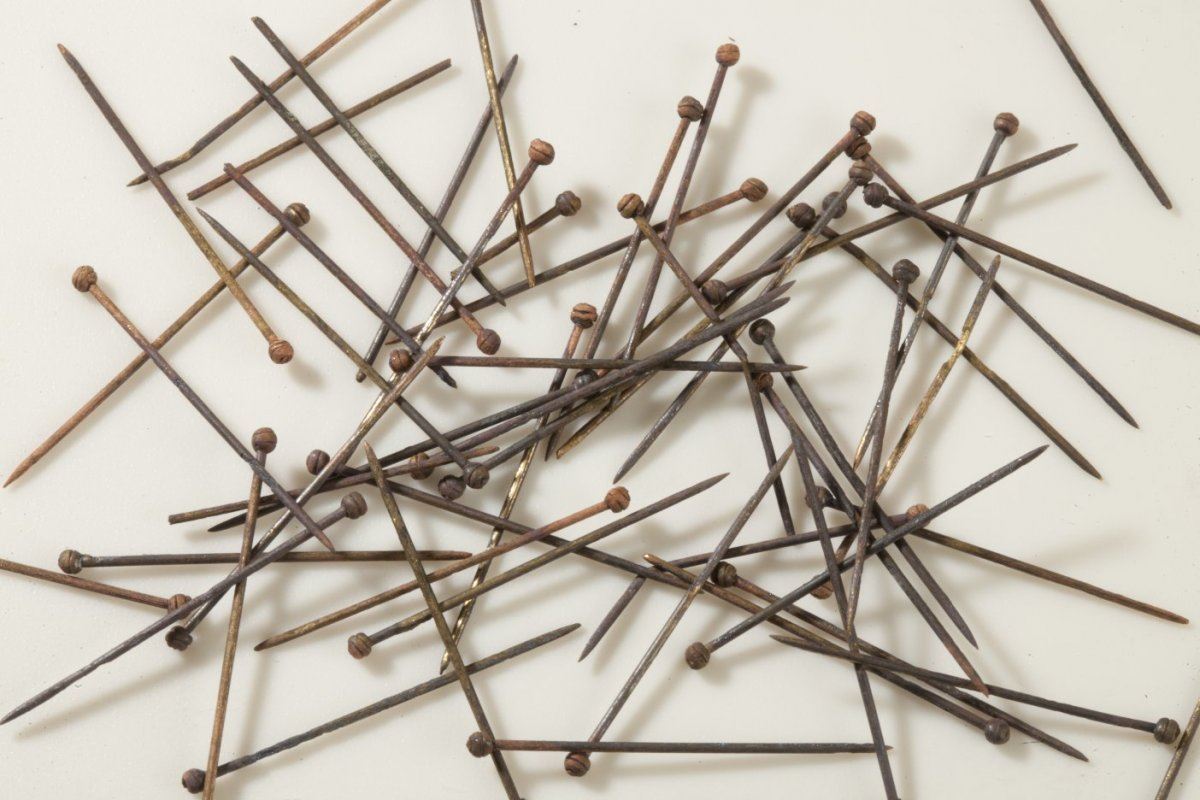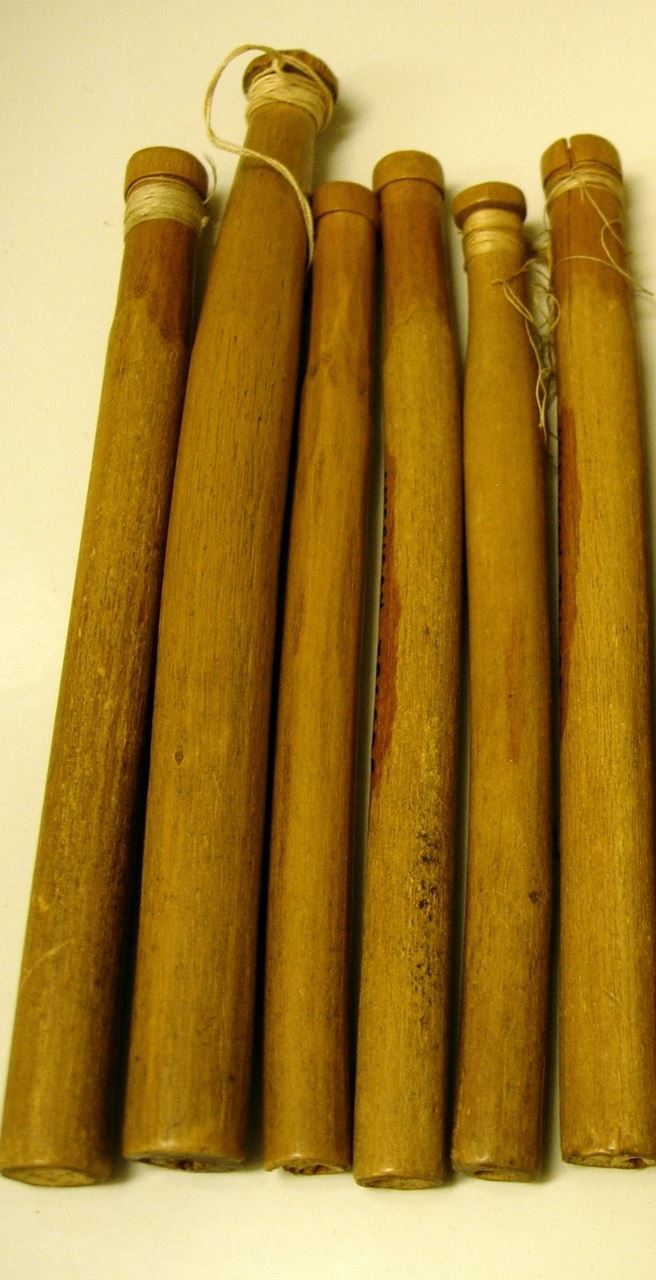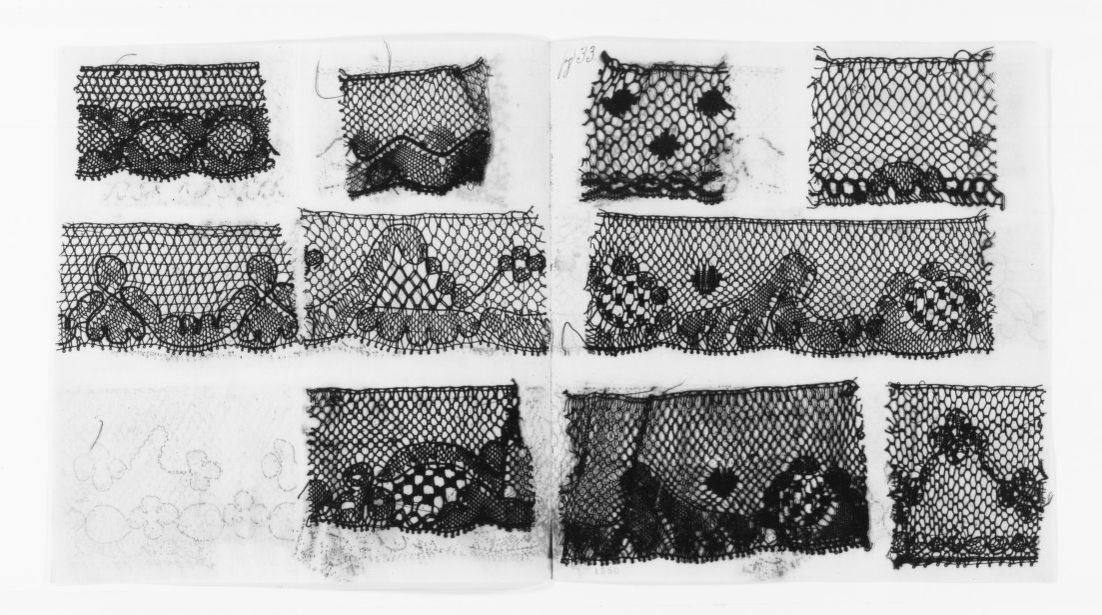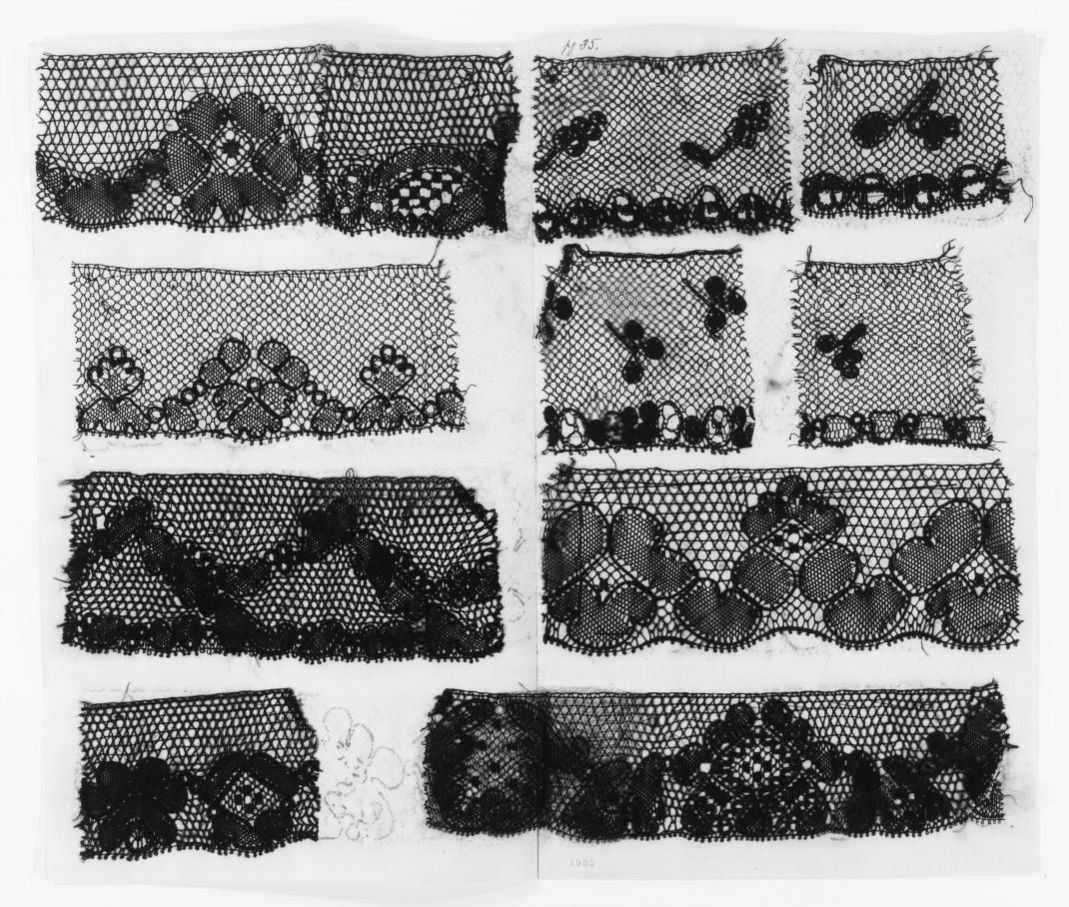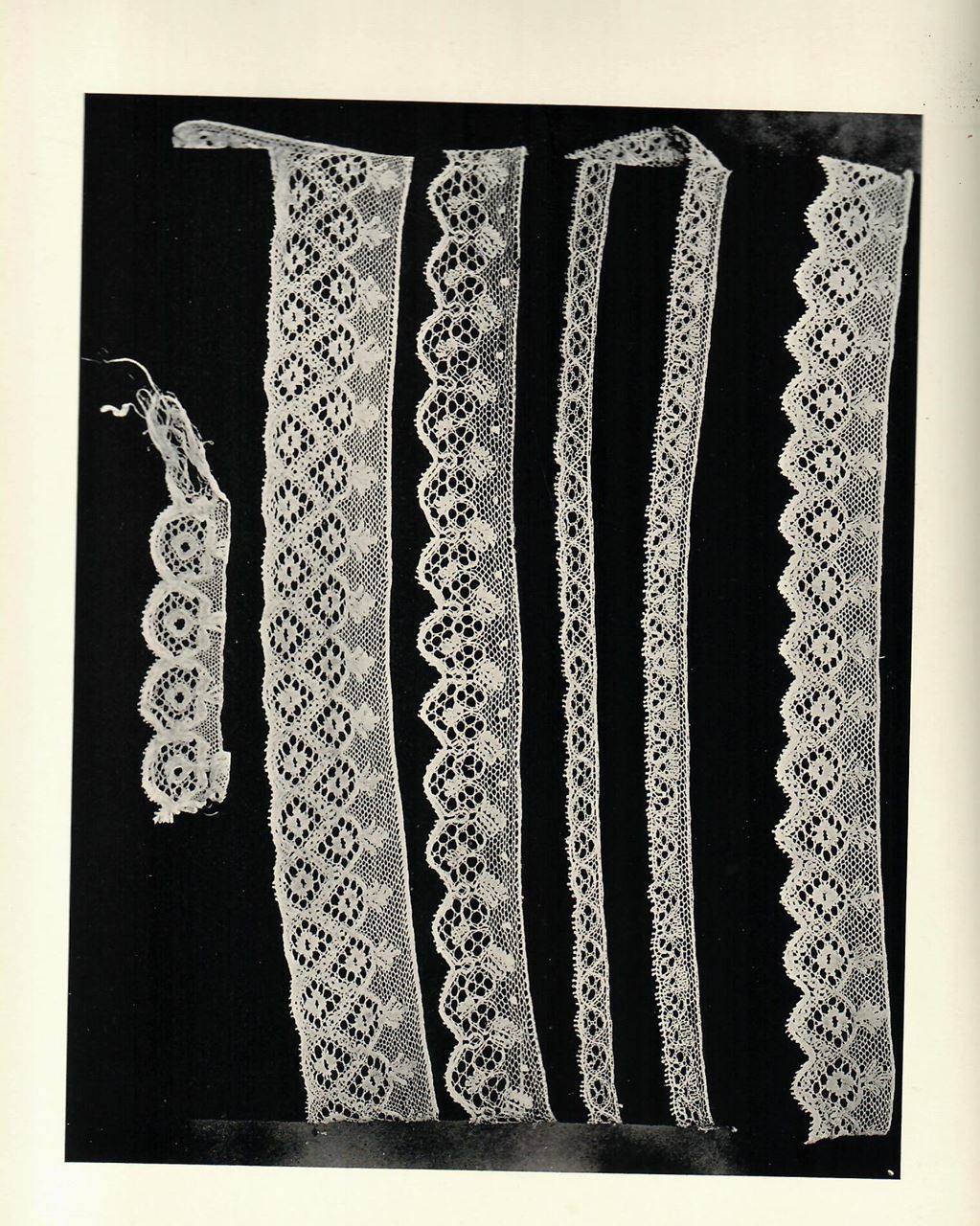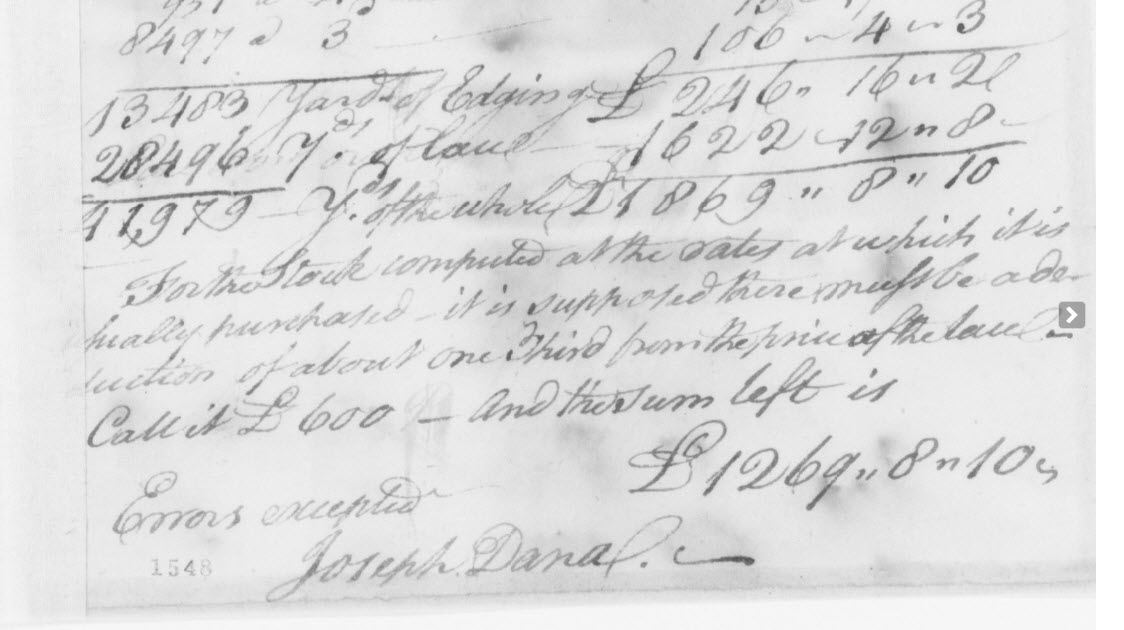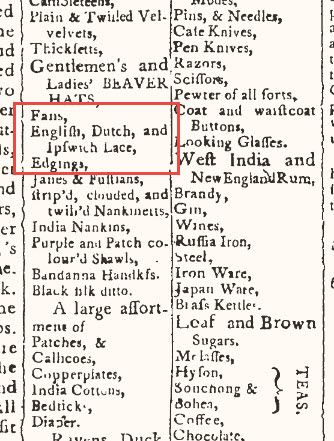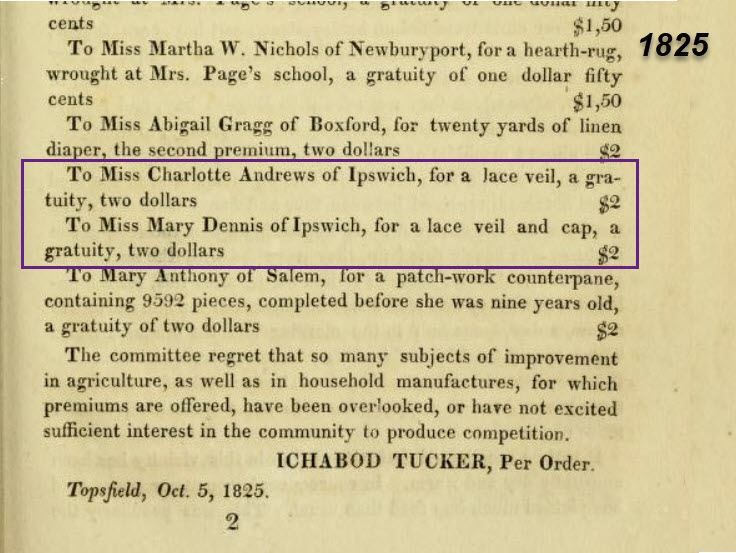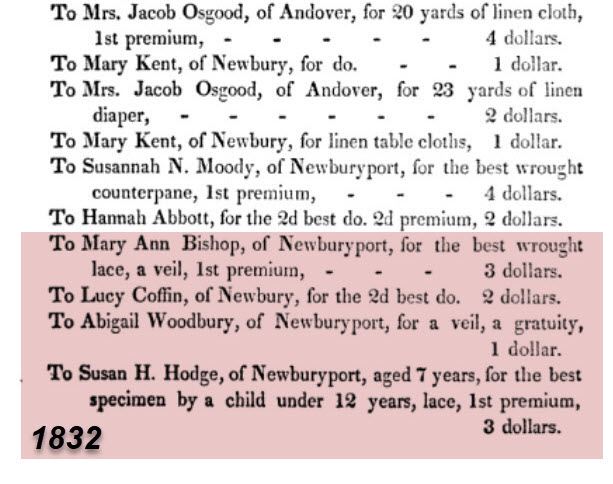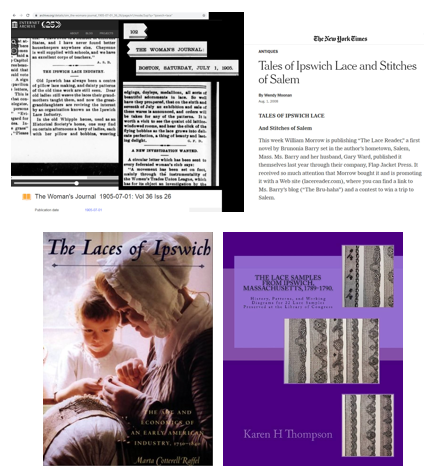Ipswich Lace: A Unique American Craft of the Early Republic Presented with grant support from the International Organization of Lace (IOLI) The only known commercial production of bobbin lace in early America Ipswich is a Town in Northeastern Massachusetts |
|
Earliest Knowledge Around Local Lace Traditions
- Puritans passed “Sumptuary Laws” prohibiting lace making and wearing, among other fancy clothing, in the 1630s and the 1650s; punishments were recorded
- Probate records suggest lace making was underway in 1645 by Jane Partridge Gaines
- A court case in 1654 describes Elizabeth Dew’s assault while she worked at her lace cushion
- Individuals making lace for limited personal use or small-scale distribution existed in the Puritan era
Records of the Governor and Company of the Massachusetts Bay in New England, Shurtleff 1854
Records and Files of the Quarterly Courts of Essex County, Massachusetts 1636-1656
Ipswich lace, a Unique American Industry and Characteristic Style
Lacemaking as economic activity
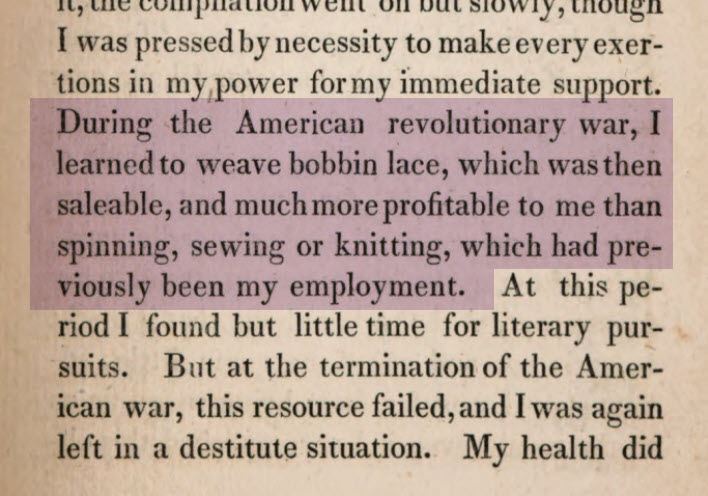
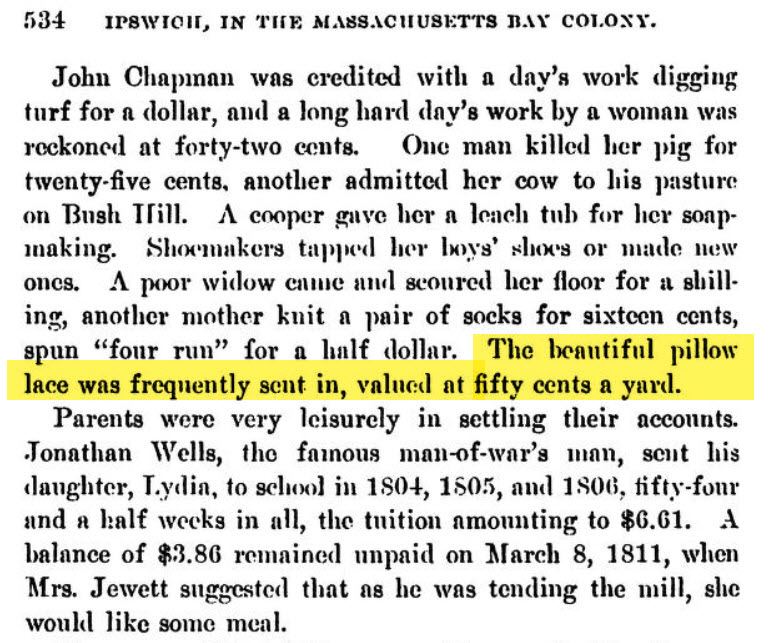
Image left: A memoir of Miss Hannah Adams, written by herself. With additional notices, by a friend. Image right: TF Waters book: Ipswich in the Massachusetts Bay Colony, Volume II
- In the mid-1700s, merchant ledgers show that lace was being made to barter for other goods
- Revolutionary War tensions discouraged and reduced imported lace purchases, creating a market for locally made lace
- Tuition payments for a local school were recorded as being made in lace
Tools of the Ipswich lace trade
- Pillows, typically bolster-style, 30 inches in circumference and stuffed with local salt marsh grass, provided the platform for the lace work; covered in repurposed durable fabrics
- Prickings are the parchment or pasteboard items that hold the pattern outlines, to guide the lacemaker’s pin positions
- Pins, hand-made of drawn wire, were expensive and required in quantities
- Bobbins hold the thread reservoir and provide weight and tension for the work; 2000 bobbins known to date consist possibly of bamboo and local wood
Linen, silk, and later cotton threads
Samples of black silk Ipswich lace from Joseph Dana's report. 1790. With Alexander Hamilton Papers: General Correspondence, -1804; 1791, Jan.-May. 1791
Ipswich laces. Owned by Miss Sarah E. Lakeman. Vanderpoel 1924
- The distinctive Ipswich lace style origins are unknown
- Made as a continuous lace, in strips, typically with Torchon variations or Paris (kat stitch) grounds, outlined with heavier “gimp” thread to designate motifs
- Sometimes has picots on the edge
- Extant samples of black silk Ipswich lace are found in the archives of museums and historical societies
- White linen samples are also known
- Cotton threads were later used as thread production techniques improved
Scale of Ipswich lace in the peak period
- Alexander Hamilton commissioned a report on early American industry, and Rev. Joseph Dana of Ipswich submitted a study with sample laces. This report and lace are in the Library of Congress with Hamilton’s papers
- Rev. Dana reported: 13483 yards of edgings + 28496 yards of lace, for a total of 41979 yards of Ipswich lace, made by over 600 local women in 1789-90
Library of Congress Alexander Hamilton Papers: General Correspondence, 1734-1804; 1791, Jan.-May
Impartial Herald 1797 advertisement; Courtesy of the Newburyport Public Library
- Lace distributors and other support services probably existed; local merchants sold lace
- George Washington purchased lace on his trip to the area in 1789
- In the 1820s, a lace factory was founded in Ipswich and some women began to embroider on machine-made netted lace, but this industry did not thrive for long afterwards
Ongoing cultural impacts of Ipswich Lace
Transactions of the Essex Agricultural Society, various years
- Lacemaking continued in the area, as records of the local agricultural fair show, until 1859
- A Colonial Revival fervor at the turn of the 19th to the 20th century generated enthusiasm for the craft, and samples exist from this period
- In the late 20th century, Michael Auclair re-created exact replicas of the Library of Congress samples
- Subsequently Marta Cotterell Raffel assembled new scholarship around the history
- Ipswich lace was used as a plot point in the series of novels by Brunonia Barry, a Salem MA author
- In this century, Karen Thompson has re-created patterns for the complete set of black silk laces, which can be used by today’s lacemakers
How Ipswich Lace was Used
- Lace was widely used in the 18th century, on women’s and men's garments, and children’s clothing too; collars, cuffs, capes, aprons, caps, and decorative objects were adorned
- Martha Washington’s shawl may be the most famous, but the example of a man’s Masonic Apron is unique and special
- Zilpah Wadsworth Longfellow (mother of the poet) owned a mourning shawl that is a recent lace discovery
- The Way sisters, famous miniature artists, used samples of fabric and lace to enhance some portraits
Learn More About Ipswich Lace
References, sources, contact information are available. If you think you may have lace samples in your archives, we'd love to hear about it; please contact us at NELGInfo@gmail.com
Lace makers contributing skill and time for this exhibit: Kathy Draves, Sue Felshin, Jill Hawkins, Linda Kukolich, Mary Linden, Gail MacLean, Mary Mangan, Kate Moore, Pat Morris, Barbara Morrow, Clare Settle, Winann Steinmetz, Karen Thompson, Carolyn Wetzel, Bryce Wolf.
